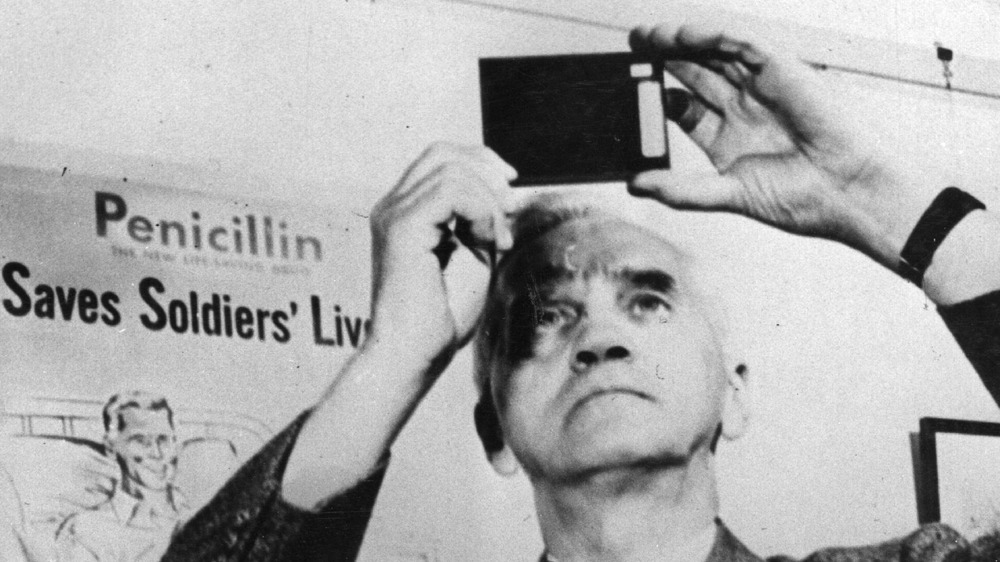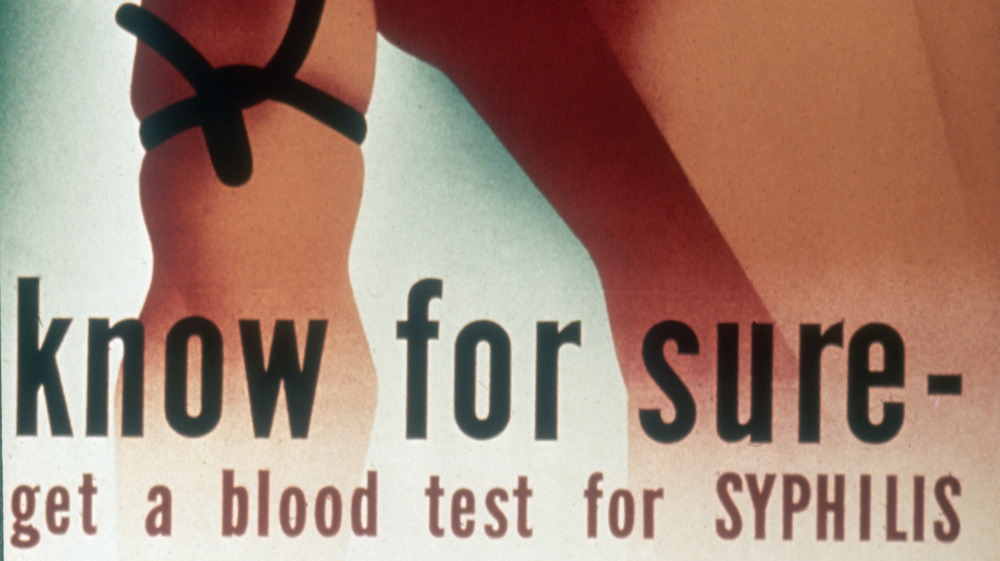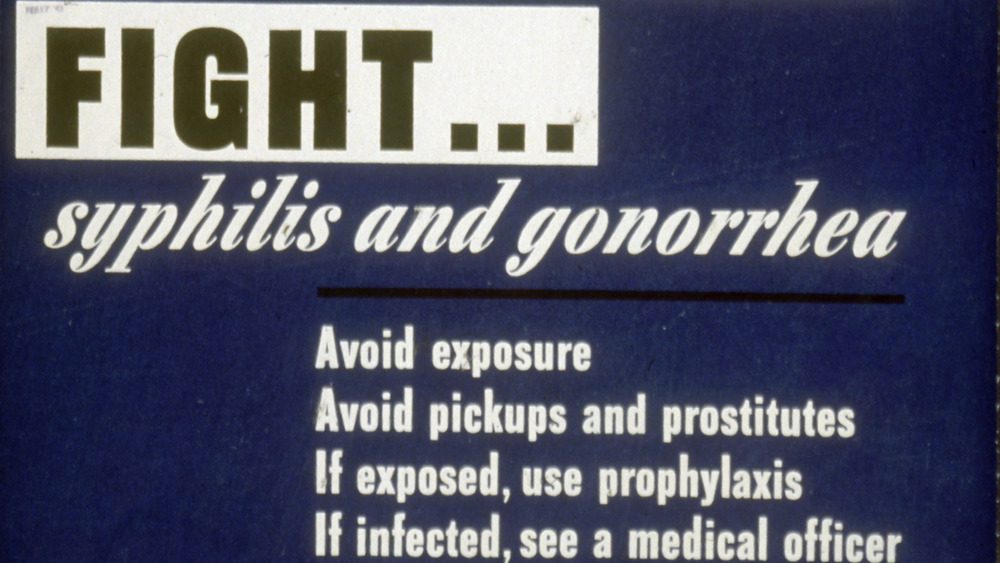The Messed Up Truth About America's Experiments In Guatemala
Even after an effective treatment of syphilis was discovered, some scientists were still concerned with finding an effective prophylaxis rather than working on bettering the existing treatment technique. And after reading about "the clinical effectiveness of the orvus-mapharsen prophylaxis that Drs. Arnold and Mahoney proved effective in rabbits," some researchers decided to pursue human experimentation of this prophylaxis.
And despite the fact that the article describing these rabbit experiments noted that such experiments in humans would be "ethically impossible," posted at the Bioethics Archive at Georgetown University, some researchers from the United States, with funding from the government, decided to go ahead and try it anyway.
These horrific experiments involving the deliberate exposure of STDs to people in Guatemala without their knowledge or consent were never published, as though the researchers were fully aware of the public outcry they'd receive. The majority of the experiments involved deliberately infecting people with syphilis or gonorrhea, but there were also a few chancroid experiments as well. "There are several published examples in which Dr. Cutler discusses data from these experiments but misleadingly cites another published study. In these cases, the published study cited does not actually support the data presented." This is the messed up truth about America's experiments in Guatemala.
According to the American Chemical Society, penicillin was discovered by Alexander Fleming in 1928, but, says the Centers for Disease Control and Prevention, it took another 12 years for Howard Florey to demonstrate that it could be used to fight off infections in mice.
The discovery of penicillin
Penicillin production was difficult during wartime, but by 1943, the United States Military was using it to treat STDs in the military, according to Kaiser Permanente. Before this, reports The New York Times, men would squirt silver proteinate or calomel lotion up the urethra in an attempt to prevent STDs.
According to "Ethically Impossible," in April, 1947, Waldemar Kaempffert published a piece in the New York Times describing an experiment with rabbits that involved intentionally exposing them to syphilis in an attempt to develop a prophylaxis. They had found that "penicillin injected within a few days after exposure could prevent syphilis infections," and although this was promising, Kaempffert noted that it would be "ethically impossible" to do such an experiment with human beings.
Although penicillin had already been adopted as the "standard treatment for syphilis," there were still questions about its long-term effectiveness and the amount necessary for effective treatment. As a result, researchers like Dr. John Charles Cutler were still interested in seeking out prophylactic techniques. In 1947 and 1948, over 1,300 people in Guatemala were intentionally exposed to STDs as part of an experiment funded by the United States Public Health Service. The victims of these experiments were soldiers, imprisoned people, and psychiatric patients, a majority of whom were indigenous Guatemalans. Some 83 deaths were recorded during the experiment.
Absolutely no consent whatsoever
In 1955, Dr. Cutler noted the "steady loss of patients by death" that had occurred, though he attributed it to TB or the fact that the people used were "chronically ill." Sex workers were sometimes used in the experiments when researchers were trying to expose someone to an STD through "normal exposure." According to "Ethically Impossible," there's no evidence that the sex workers consented to the experiments or knew they were being deliberately infected, and "the majority of notes do not document any compensation."
According to "Syphilis and Human Experimentation From World War II to the Present", posted at Science Direct, "thousands of serologies were [also] performed in individuals belonging to indigenous populations or sheltered in orphanages."
Readers will not be surprised to know that Dr. Cutler later went on to participate in the Tuskegee Study of Untreated Syphilis, which, according to the Washington Post, was also carried out without the informed consent of its participants. It's important to note, however, that the Tuskegee study was focused on monitoring untreated syphilis in people who were already infected, while the Guatemala study was concerned with deliberately exposing people without their knowledge or consent. From May 1947 to October 1948, 688 people were used in experiments that involved the intentional exposure of syphilis. Imprisoned people and psychiatric patients were used as the victims for these experiments. According to "Ethically Impossible," after researchers realized that they were unable to get consistent and substantial transmission rates with the sex workers, they started using different methods of syphilis transmission.
'Ethically impossible' syphilis experiments
Reports Hektoen International, scarification and abrasions on the arms and genitals were used to increase the rate of syphilis transmission. Despite the fact that some of his superiors expressed disapproval, Dr. Culter ignored their objections. According to the American Sexually Transmitted Diseases Association, another method of deliberate exposure was through a cisternal puncture. "Seven women in the Psychiatric hospital were exposed to syphilis via cisternal puncture, the injection of syphilis into the spinal fluid from the back of the skull." Out of the 688 who deliberately exposed without their consent or knowledge that they were part of an experiment, 388 "were treated in some fashion."
Almost 600 people were intentionally exposed to gonorrhea. From February 1947 to July 1948, researchers experimented on soldiers, and from July 1948 to September 1948, researchers experimented on patients at the psychiatric hospital. Out of the 582 intentionally exposed, "available records document only 237 receiving any form of treatment," writes "Ethically Impossible." "The experiments in the psychiatric hospital appear to have been primarily observational (i.e., no prophylaxis or treatment was tested)."
Infection methods ranged from superficial to deep inoculations, with and without preceding sexual exposure. Researchers also deliberately infected sex workers with gonorrhea by putting gonorrhea pus on a cotton-tipped swab and "swabb[ing] it around ... with considerable vigor" on their cervix.
Intentional exposures to gonorrhea
These gonorrhea experiments also weren't the first conducted by Dr. Cutler, according to "First, Do No Harm" by Michael A. Rodriguez and Robert García, posted at the National Center for Biotechnology Information. From 1943 to 1944, he conducted similar experiments in the Terre Haute Prison in Indiana, although in these experiments there were "strict constraints for informed consent."
In 2010, as Slate reported, the United States offered an apology to the people of Guatemala for exploiting their ancestors. And yet, according to Pacific Standard, a 2012 class-action lawsuit against the United States government for "damages stemming from the experiments" was thrown out (per Jurist) when a U.S. District Court "[found] that the government has immunity from liability for harm suffered outside the U.S." under the Federal Tort Claims Act (FTCA).
In January 2019, however, Reuters reported that U.S. District Judge Theodore Chuang determined that domestic corporations can't claim the same liability. As a result, it was ruled that "Johns Hopkins University, Bristol-Myers Squibb Co BMY.N and the Rockefeller Foundation must face a $1 billion lawsuit" due to the fact that several of their doctors and executives were involved with the experiment.
According to George Annas, director of the Center for Health, Law, Ethics & Human Rights at the Boston University School of Public Health, "We always act shocked by research scandals and see them as historical anomalies that cannot be repeated. But so far, we've always been wrong."




